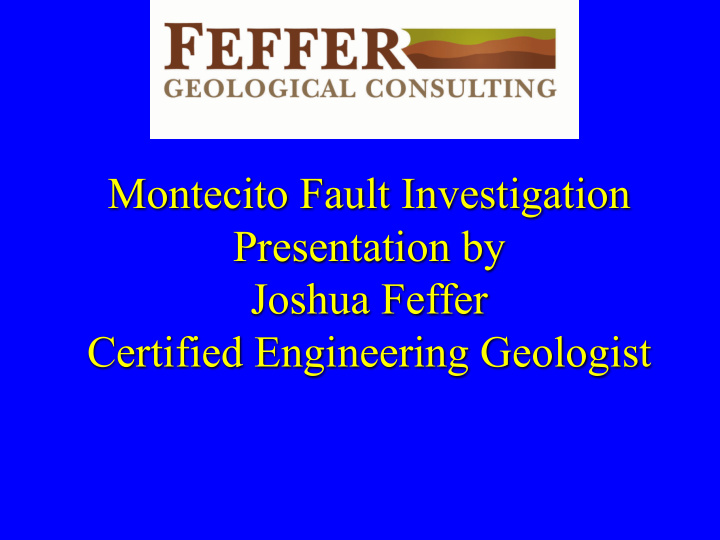



Montecito Fault Investigation Presentation by Joshua Feffer Certified Engineering Geologist
Problems Associated With Earthquakes • Ground shaking (occurs frequently) • Ground rupture and lurching (occurs less frequently) • Liquefaction (occurs only in select soil types with a shallow groundwater table) • Lateral spreading (liquefaction induced or in slopes) • Earthquake induced landsliding
What is an Active Fault? • 1971 Sylmar/San Fernando Earthquake – Caused Ground Cracking and Movement • Alquist-Priolo Fault Special Studies Zone Act of 1972 – Designed to Mitigate Damage from Surface Fault Rupture • Definition of Active Fault – Readily Identifiable – Active in Holocene Time, ~11,000 years
Investigation • Initial Research – Maps • Geology and Topographic maps – Historical Photographs – Publications, both published and unpublished • Site Review – Borings • Bucket Auger • Continuous Sampling – Trenches – CPT – Age Dating of Soil Encountered
Geologic Map
Publications
Publications
Investigation • Iterative Approach – Consulted with Geologists from State of California Geological Survey and City of Los Angeles • Initial Subsurface Investigation-Phase I – 4 test pits, 2 Auger Holes, Trench 1 • Phase II Subsurface Investigation – 6 Bucket Augers • Phase III Subsurface Investigation – Trenches 2 and 3 • Phase IV Subsurface Investigation – Continuous Borings and CPT’s
Investigation Map
Cross Section
Age Dating • Reproducible and Verifiable
Conclusions • No Evidence of Active Faulting at Montecito – Unbroken soil overlying inactive faults is older than 11,000 years • State of California and City of Los Angeles review and approval • Geotechnical Investigation still to be completed
Recommend
More recommend